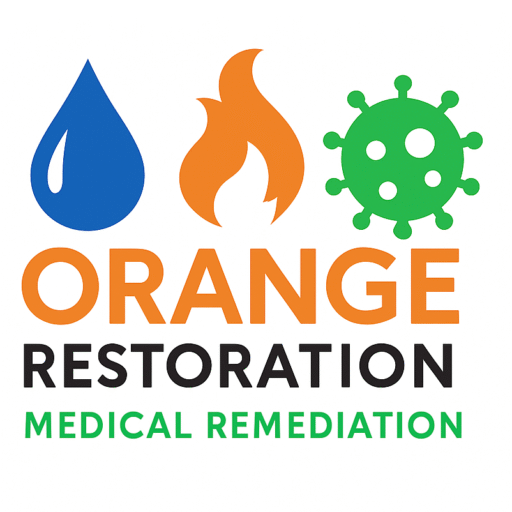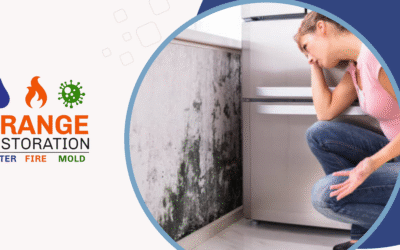Mold doesn’t just damage your walls or cause a musty smell. Mold impacts our health and can even make our bodies a host to mold spores and VOCs....
ATTIC CLEANING SAN DIEGO
ATTIC CLEANING PROTECTS YOUR SAN DIEGO HOME!
Your attic is the first barrier between your house and the elements. It’s there to keep you safe and comfortable by reducing your energy consumption when it comes to heating and cooling your home. Attic cleaning in San Diego is extremely important. A poorly maintained attic can also be used as a nesting area by pests such as rodents and birds, that can be a health hazard by bringing illnesses into your home and are also capable of damaging essentials such as electrical wiring and structural components etc. and even cause fire.
Our team has been cleaning attics for decades, so we decided to devote a team to the service. Our team is available for attic cleaning, insulation removal & installation, attic sanitization, radiant barrier installations and all crawl space needs as well. To begin, our team often starts each project with a site visit to your home or business to conduct an Attic Inspection. The attic inspection is intended to give you insights to your needs for a healthy attic. This means making recommendations and also understanding your goals for your attic and home. Over the course of doing this service for decades, we developed an Attic Inspection Check List, seen below.
INSPECTION CHECK LIST
- Examine the interior of your attic for pest damage and structural damage.
- Assess any home owners main concerns with thorough inspection of problems.
- Assess the insulation. Check the exterior of your home or roof.
- Inspect the attic vents for blockages and damage.
- Inspect HVAC electrical wiring, electrical wiring in attic, and other electrical wires that could be impacted by attic or crawl space.
- Attic inspection for animals, looking for droppings, gnawed or scratched material, nests, and foul smells.
- Inspect the roof for leaks and signs of water damage.
- Check rafters and trusses for structural damage.
- Pay attention to odors, which could indicate pest or mold presence.
- Ensure proper attic ventilation to prevent moisture problems. Review findings with homeowner, showing photos, examples of inefficiency, and make suggestions for further actions.
An outdated attic can also hold hazardous materials like asbestos or other chemicals that can cause severe illnesses if exposed to over a long period of time. With proper care, by removing health hazards and preventing them, and with updating essential materials like insulation and air systems, your attic can be the proper barrier it’s designed to be, keep you safe and healthy, and even help you save money on energy.
Give us a call today for an attic inspection! (619) 376-6838
Removing Attic Mold
Attics are the most frequent locations to experience mold growth in a home. This is because attics have higher temperatures and more moisture accumulation than any other room. In addition, the abundance of wood sheathing in the attic is attractive to mold. So when you have organic matter and moisture in one location, you can expect significant mold growth shortly after. All that applies to attic mold, the same goes for mold in your crawl space.
Do you have mold growing in your attic?
Here are the common signs of attic mold growth:
- Mildew odor
- Soaked or moist insulation
- Frost on the roof sheathing
- Leaky roof
- Hot and humid air
- Ceiling fans dripping water
- Black or dark brown stains on any wooden areas
You don’t need to be a mold expert to recognize the signs of its presence. For example, if it feels stuffy, musty, and hot in your attic despite the existing ventilation, then you likely have a mold problem. This can be confirmed if you see black or dark brown stains on the plywood or other organic material.
Why You May Experience Increased Attic Mold
Modern attics have innovative ventilation systems to help prevent heat and humidity from building inside them, these can quickly cause attic mold or mildew to form. However, if your ventilation system is clogged or malfunctioning in some way, it won’t allow outside airflow to pass through the attic. That is when you’ll start to see mold growth on the wood and smell mustiness in the air.
The typical attic ventilation problems include:
Few Vents Installed – Some older homes have fewer vents installed in the attic than what current local building codes would allow. The general rule of thumb is to have a one-square-foot vent per 100 square feet of space in your attic.
Blocked Soffit/Eave Vents – Insulation can often block airflow passing through soffit and eave vents. The blockage will cause warm, humid air to accumulate in the attic.
Depressurized Air – The worst scenario is when moldy attic air becomes depressurized because it can flow into the living room and bedrooms. Then you’ll have a severe health crisis on your hands.
Contact a ventilation maintenance and repair specialist if you experience any issues with your attic ventilation system.
How to Remove Attic Mold
Some homeowners may want to save money by attempting to remove their attic mold themselves. However, it is a risky job for an untrained person because mold has the potential to cause or inflame respiratory health conditions in people.
In addition, it is extremely risky and hazardous to make the necessary repairs to your attic, roof, or ventilation system without the proper experience. All it takes is one wrong move to fall and injure yourself, especially if you go through the floor joists in the attic. That is why you should never remove attic mold without the assistance of a professional.
Do-it-yourselfers are better off trying to eliminate minor mold issues in their basements and on their walls. But a professional should eliminate more serious mold situations, including mold growth in the attic. They have the proper tools, skills, chemicals, and experience to do the job right without risking anyone’s health.
Call a Professional Mold Removal Company
Orange Restoration is a professional mold removal company in San Diego. We can use mold-killing chemicals or abrasive blasting to eliminate mold from your residential or commercial property, and we have lots of experience with attic mold remediation.
Our mold-killing chemicals are powerful cleaning agents formulated to destroy mold. After that, we can install robust anti-fungal sealers to stop mold growth from returning. As for the abrasive blasting, the technician will use sand, dry ice, or soda ash to blast away the moldy surface layer of the wood in the attic.
Repairing Mold in Crawl Space
Mold in Crawl Space
Many homes and buildings with multiple floors have crawl spaces, especially between the first floor and the ground. Crawl space has many of the same features as a basement, except it is usually shorter and smaller. Rather than having the luxury of walking through a crawl space, you’ll have to crawl through it on your belly. Hence the name “crawl space.”
Mold is one of the most common things you will see in a crawl space. Since crawl spaces retain a lot of moisture and humidity, it is the perfect breeding ground for mold and fungus. If you crawl into this space unprotected with mold present, it could seriously put your health in danger. If you have mold in your crawl space in San Diego, call Orange Restoration today! (619) 376-6838
Everything You Need to Know About Mold in Crawl Space
Furthermore, mold growth can severely impact the wooden structure of your building. If you don’t remove the mold from your crawl space and repair the damage promptly, it could render the building uninhabitable.
Below are the four main steps for repairing a crawl space when there is mold in it.
1) Seal the Cracks in the Walls
Do you see any cracks in the walls or windows of your crawl space? If so, you need to seal these cracks immediately. Cracks can allow outside moisture to seep through and accumulate in the crawl space.
Most experts recommend installing a plastic vapor barrier throughout the perimeter of the crawl space as a way to encapsulate it. That way, it adds maximum insulation and protection to the crawl space. You should see minimal mold growth after that.
2) Run a Dehumidifier in the Crawl Space
Humidity is the driving force for mold growth. Since crawl spaces are notorious for their humidity, you must eliminate the humidity to prevent mold growth. One highly effective way of doing that is to run a dehumidifier in the crawl space. The dehumidifier will dry out the crawl space so that mold fungus will no longer be interested in breeding there.
You don’t have to run the dehumidifier every day. Instead, inspect the crawl space periodically to see if it is dry. If you ever notice a musty smell, then run the dehumidifier before the condition gets worse. This is particularly important after rain or flooding, especially if you have a leaky roof.
3) Fix Leaky Water Pipes
It is common for water pipes to flow through crawl spaces. But if one of these pipes leaks, the excess water in the crawl space will attract mold. So it is best to inspect these water pipes regularly for signs of leakage or damage. Then repair leakage or damaged pipes as needed.
If you think you can handle the leak repair job yourself, then use online tutorials to guide you through the process if it is a minor leak. On the other hand, you may need to use a licensed plumber if the leakage is too severe.
4) Replace Any Deteriorated Wooden Beams or Joists
Crawl spaces have wooden beams and joists everywhere. Unfortunately, the moisture accumulation will make the wood deteriorate and deteriorate quickly. If your crawl space has not been maintained properly, this situation will occur.
Mold In Crawl Space May Need A Professional
Mold in crawl space can lead to poor air quality in the home, 60% to 80% of the air from your home comes in through the crawl space. If you feel you have toxic air in your home, we now specialize in medically sound remediation and can help with getting an IEP involved to help you.
The best thing you can do is replace the deteriorated wooden beams and joists. Then, from that point forward, continue to dry out the crawl space and reduce the humidity as much as possible. Call a professional mold damage repair company if the mold growth has spread too much onto the walls and ceiling of your home. (619) 376-6838
Get in touch with us
Interested in our services?
Frequently Asked Questions

24/7 Emergency Services

30 Minute Response

Insurance Approved

BBB A+ Company
Summer Mold testing & Remediation
For many of our clients, they want fast mold remediation for health emergencies, and they want to get back in their homes as soon as possible. ...
Learning About CIRS, Your Health & Home
At Orange Restoration, we regularly work with individuals suffering from chronic illnesses linked to mold exposure, including CIRS (Chronic...
Our Trusted Partners








































